How to see SpaceX’s Crew Dragon Demo Two mission in orbit.
Update: As you probably know by now, yesterday’s Crew Dragon Demo-2 launch was scrubbed due to weather violations. This is a tough one, as seas need to be relatively calm along the entire Atlantic launch track, in the event of an abort. The next launch is set for Saturday, May 30th at 3:22 AM EDT/20:33 UT, with a backup launch date of Sunday, May 31st at 3:00 AM EDT/20:00 UT. As it stands, weather prospects for both dates are currently at a 60% chance for launch violation. The weather prospects and sighting graphics in this article are updated to reflect the new launch dates, and of course, we’ll be tracking changes on Twitter as @Astroguyz.
It’s been a long time coming.
Nearly nine years after Space Shuttle Atlantis on mission STS-135 landed at the Kennedy Space Center on July 21st, 2011, crewed missions are about to resume from U.S. soil this week, with the launch of a SpaceX Falcon 9 rocket with the historic Crew Dragon Demo 2 mission, carrying NASA astronauts Douglas Hurley and Robert Behnken to the International Space Station. And with any luck and clear skies willing, you may just be able to spy the mission chasing down the station this weekend.
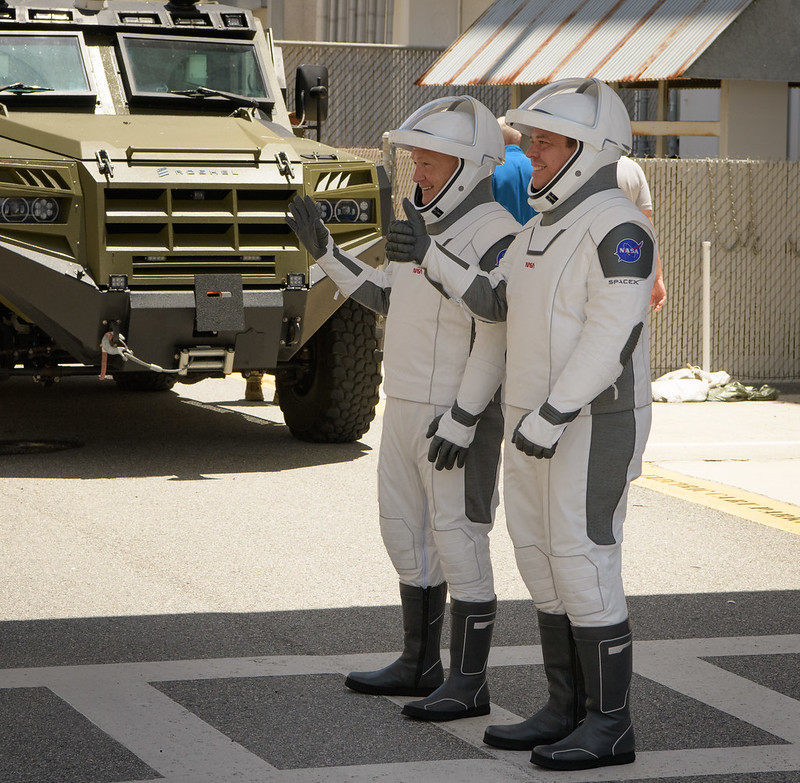
Spotting Crew Dragon
Crew Dragon is expected to liftoff from Launch Complex 39A at the Kennedy Space Center on the Florida Space Coast on Saturday, May 30th at 19:22 Universal Time (UT)/3:22 PM Eastern Daylight Saving Time (EDT). That’s eight minutes behind the International Space Station in its orbit. Eastern European-based observers should see Crew Dragon visible at dusk around 15-20 minutes after launch from Florida. Dragon will also pass very near the waxing gibbous Moon, another plus. Viewers based in Tasmania may also see Crew Dragon chasing the ISS at dawn on first orbit.
Adrian West (@adrian-west on Twitter) also has a great post covering tomorrow night’s sighting prospects for the UK).
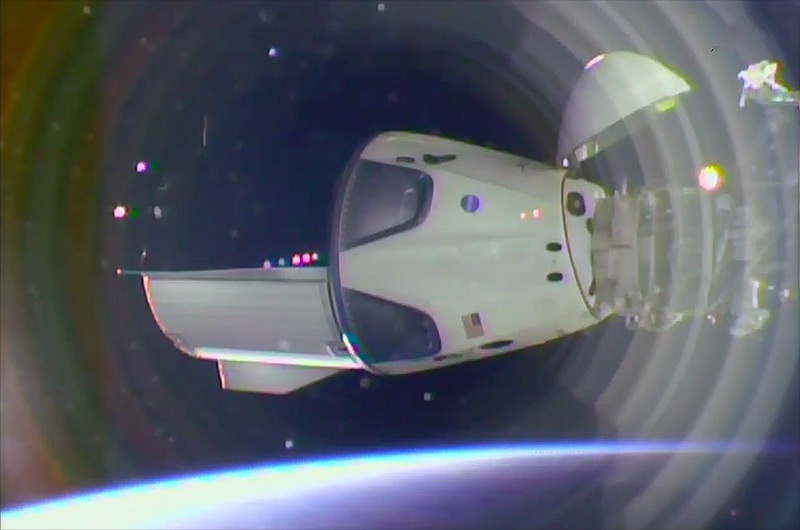
Crew Dragon will arrive at the International Space Station the day after launch.
Passes for Wednesday night into Thursday morning favor a swath along 35-55 degrees north latitudes Saturday night at dusk and 45-60 degrees south latitude at dawn. The evening passes favor Europe, the United Kingdom, Japan, and the northern contiguous United States and Canada. If you have a good pass of the International Space Station, your chances are pretty good that you’ll see Dragon chasing the International Space Station this weekend if skies are clear.
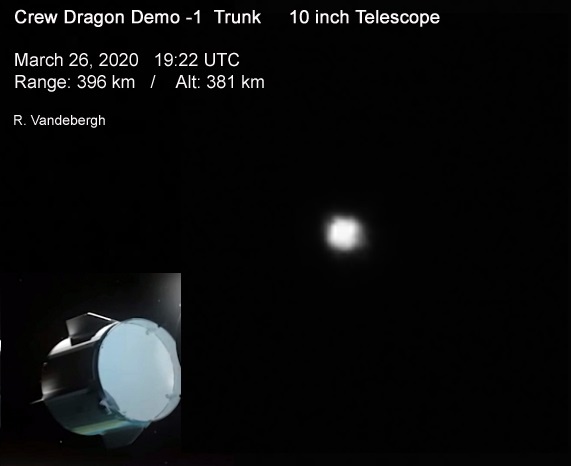
Tracking Online
Heavens-Above is your best bet for up-to-date information on current ISS passes worldwide. The site already has a ‘Crew Dragon’ link on their front page, in anticipation of this weekend’s launch… and of course, we’ll be tweeting sighting prospects worldwide as @Astroguyz shortly after liftoff.
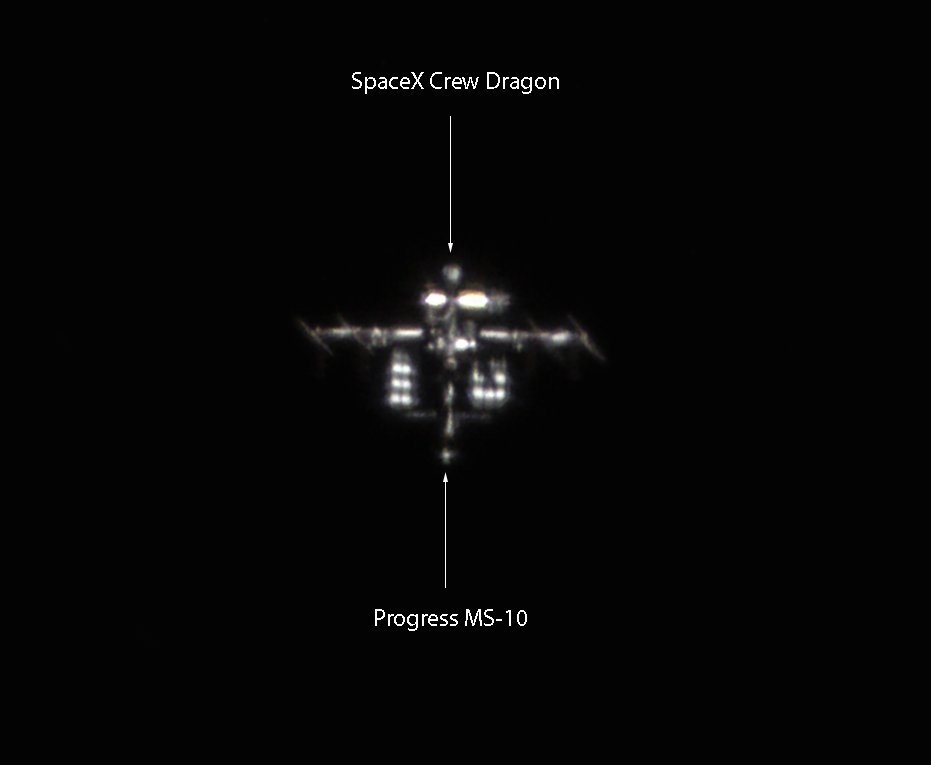
If launch does not occur on Wednesday, it will slip back to Saturday, May 30th at 3:22 PM EDT/19:22 UT. (see updates at the beginning of the post). NASA TV will carry the launch live starting at 12:15 PM EDT/16:15 UT. We’ll post updates here and on Twitter for new sighting opportunities if that does indeed occur.
Visibility and Cloud Cover Prospects
Dragon will appear fainter than the brilliant ISS, though it will still be easily visible to the unaided eye. Lots of viewers in the UK enjoyed passes of JAXA’s HTV9 this past weekend, and there’s always lots of ISS passes for northern hemisphere observers leading up to the June Solstice next month.
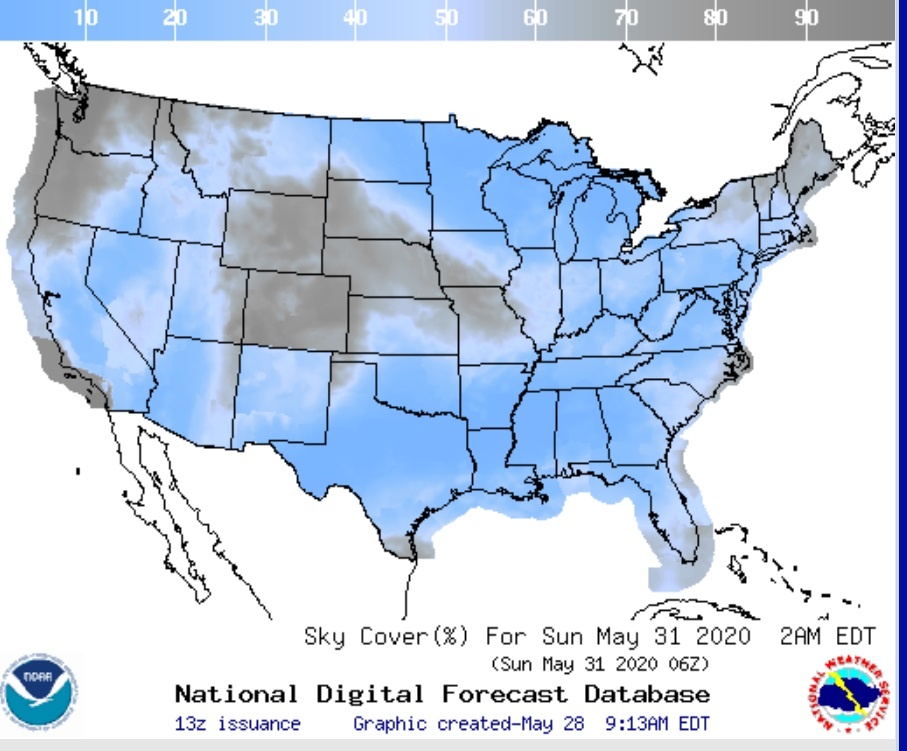
Last year’s automated Crew Dragon Demo One (COSPAR ID 2019-011A) generated two objects in orbit: the spacecraft plus the spacecraft trunk, which was jettisoned prior to reentry. Demo 2 will stay at the ISS for four months, for a return in late September 2020. Crew Dragon Demo 2 should pop up on Space-Track’s catalog at COSPAR ID 2020-032A shortly after launch.
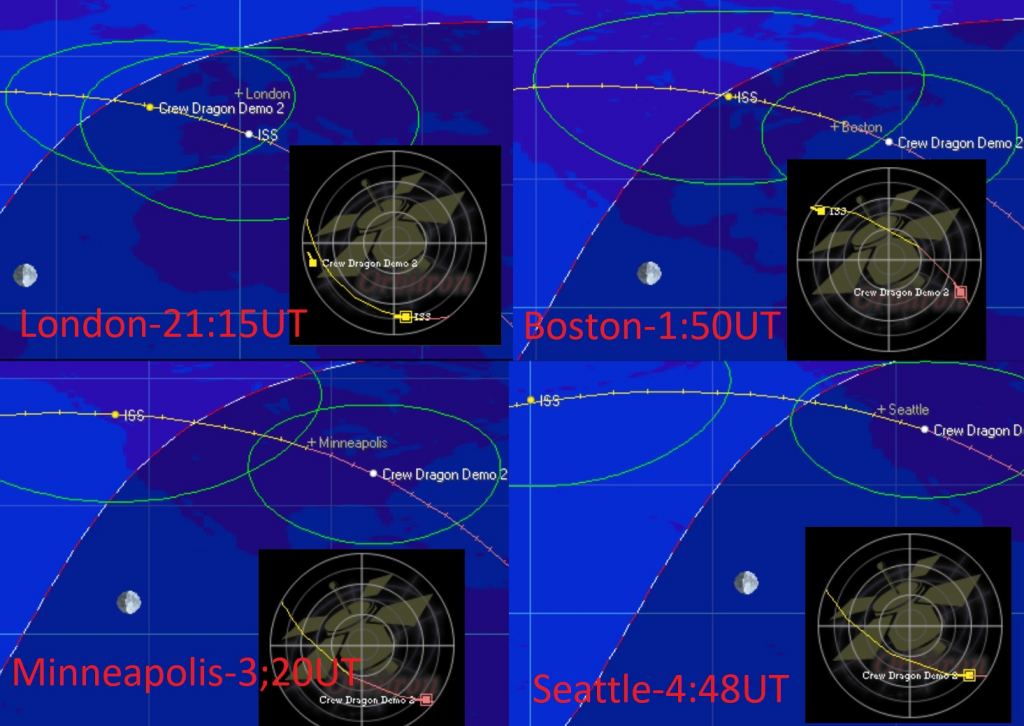
It was always dramatic to see the Space Shuttle chasing the ISS as a faint moving ‘star’ shortly before or after arrival. It’s been a busy season for ISS observers, with the arrival of HTV-9 and Crew Dragon this week, and the departure of Cygnus earlier in May for destructive reentry over the South Pacific this week. We even caught a good visible pass of said doomed Cygnus NG13 two weekends ago, with the recently deployed ‘ULTP’ (UbiquiLink Test Payload) demonstration satellite fielded by the Lynk Corperation in tow. The company also plans to deploy yet another communications constellation in low Earth orbit, similiar to SpaceX’s contraversial Starlink.
Viewing the ISS through binoculars, I can just make out a hint of structure on an overhead pass through the zenith. Depending on its orientation, the ISS can look like anything from a close double star, to a flying box, to a small Star Wars ‘TIE Fighter’ through binoculars. Crew Dragon will appear too tiny to show structure, but imagers have pulled out some amazing detail from the ISS as of late, and may have a go at Crew Dragon as well.
There is a glint of sunlight in above animation possibly from HTV-9. My brain appears to have a hard time accepting the perspective (“upper” panel being the near one). Here is the same animation vertically flipped for comparison. pic.twitter.com/5fnLBSLZSQ
— Christian Fröschlin (@chrfrde) May 25, 2020
It’s a busy time in Low Earth Orbit for sure, as NASA and SpaceX ushers in an exciting new era of crewed spaceflight. Don’t miss the historic Crew Dragon Demo 2 launch this weekend, coming to a sky near you. Good luck, and clear skies.
Lead Image: The rollout of Crew Dragon Demo Two. Credit: NASA/Bill Ingalls.

